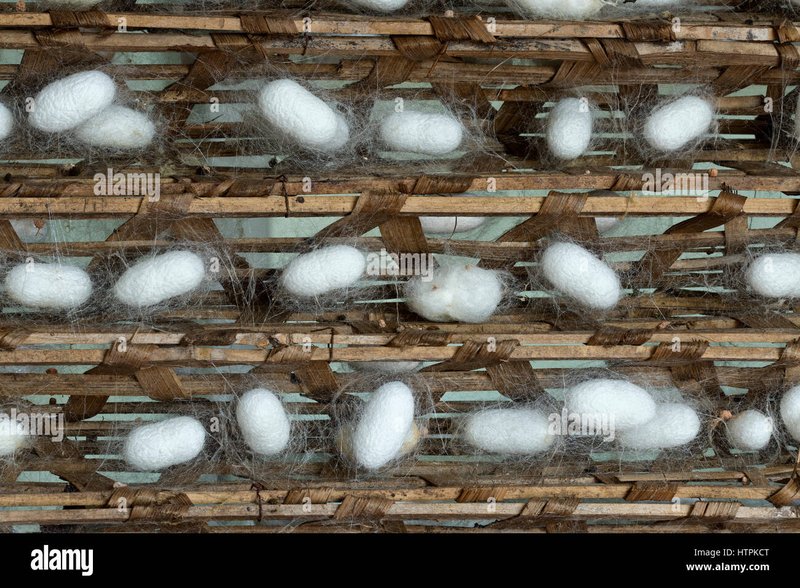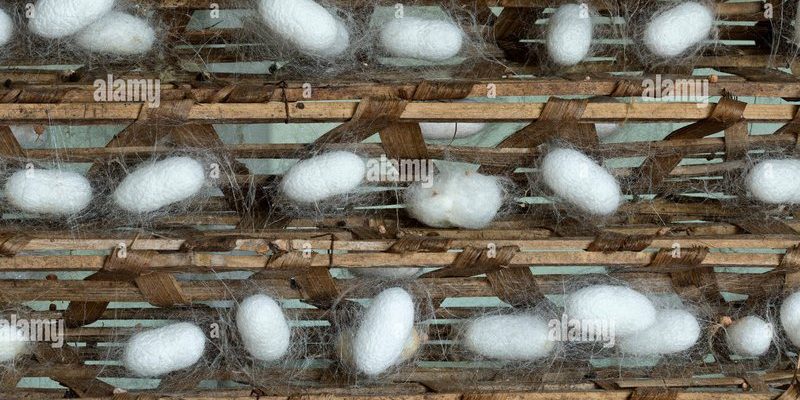
If you’re new to the world of silk production, you’re in for an interesting journey. Understanding the silk yield per silkworm breed can help silk farmers maximize their production and ensure high-quality silk. So, let’s dive into this fascinating topic and untangle the intricacies of silkworm breeds and their silk contributions!
What are the Main Breeds of Silkworms?
When we talk about silkworms, the most common breed that springs to mind is the **Bombyx mori**. This breed is the superstar of the silk industry, known for its ability to produce a significant amount of silk. Think of it as the superstar athlete of the silkworm world. But there are also other breeds, each with its unique characteristics and silk production capabilities.
For instance, the **Antheraea mylitta** and **Antheraea pernyi** are both wild silkworms that contribute to the overall silk yield but differ in quality and quantity. While these species may not match the Bombyx mori in sheer volume, they often produce silk with different textures and qualities, adding to the variety available on the market. Isn’t it fascinating how nature gives us so many choices?
How Does Silk Yield Vary by Breed?
Silk yield can vary dramatically from one breed to another. Generally, the silk yield is measured in terms of the amount of raw silk produced from a specific number of cocoons. For instance, the Bombyx mori can yield about **10-15%** of its body weight in silk. In contrast, wild breeds like the Antheraea often yield less—around **5-10%**. This might not seem like a lot at first glance, but when multiplied over thousands of cocoons, those numbers can add up.
Here’s the thing: farmers often choose which breed to rear based on their intended market. If they’re targeting high-quality silk fabrics, they might favor Bombyx mori. If they’re looking for a more textured silk for niche markets, they might opt for a wild breed like Antheraea. It’s all about finding the right balance between quantity and quality.
Factors Influencing Silk Yield
Several factors influence how much silk a silkworm breed produces. First and foremost is **nutrition**. The diet of silkworms is crucial; those fed high-quality mulberry leaves tend to produce more silk than those with a subpar diet. Just picture how the same applies to us: eat better, perform better, right?
Another factor is the **environment**. Silkworms do best in specific temperature and humidity conditions. If they’re too hot or too cold, or if the humidity isn’t quite right, their silk production can drop. This means that sericulture (the cultivation of silkworms) requires careful attention to these environmental factors to maximize yield.
Lastly, the **age** of the silkworms plays a role too. Younger silkworms may not produce as much silk as their fully matured counterparts. Farmers often have to strike a balance between raising their silkworms long enough for maximum silk production without letting them age too much and suffer decreased vitality.
The Life Cycle of Silkworms and Its Impact on Yield
Understanding the life cycle of silkworms can also help us appreciate their silk yield. Silkworms go through several stages: egg, larva (caterpillar), pupa, and adult moth. Most of the silk is produced during the larval stage, where they munch on those delicious mulberry leaves and grow rapidly.
Once they reach maturity, they create cocoons, which is where the silk is spun. This pupa stage is crucial; if not properly managed, it can affect overall yield. For example, farmers must prevent pests or diseases during this phase, as they can quickly decimate a herd of silkworms.
Each life cycle stage comes with its challenges, and it’s up to the farmers to navigate these to ensure a successful harvest. It’s a bit like tending to a garden—you need to nurture and protect your plants to reap a bountiful harvest.
Comparing Yield and Quality
When considering silk breeds, it’s important to think not just about yield but also about quality. High-yield breeds like Bombyx mori are sought after for their consistent, luxurious silk. However, some consumers are increasingly interested in the different textures that come with wild silks.
Wild silks can provide unique characteristics, such as darker colors or a more textured feel. Although these breeds may produce less silk, they can fetch a higher price per weight due to their distinctive qualities. This leads to interesting dynamics in the market: some farmers prioritize quantity for mass production, while others focus on unique characteristics for niche markets.
Ultimately, it comes down to what the market demands. It’s kind of like choosing between a sleek sedan and a rugged SUV—each has its merits depending on what you need!
Challenges in Silk Production
Despite the allure of silk farming, there are several challenges that producers face. Apart from environmental threats and pests, market fluctuations can significantly impact profitability. A sudden drop in demand could leave farmers with excess silk that they can’t sell.
Weather patterns also have a significant effect. Too much rain or extreme heat can disrupt production cycles. For example, if silkworms become stressed during unfavorable weather, their yield might decrease, affecting the entire operation.
Besides these factors, there’s also the ongoing challenge of keeping up with advancements in technology and sustainable practices. As consumers become more eco-conscious, many farmers are looking to implement organic and sustainable methods in their sericulture practices. This transition, while beneficial, can present its own set of challenges.
The Future of Silkworm Farming
As trends shift, the future of silkworm farming is poised for change. Innovations in breeding techniques aim to produce silkworms that yield more silk or develop even stronger, more resilient traits. Genetic research could pave the way for breeds that thrive under various environmental conditions or resist pests more effectively.
Additionally, the rise of sustainable fashion could also influence the silkworm industry. Consumers are increasingly turning toward eco-friendly products, which may lead to a resurgence in interest in natural silk. This means that farmers who adapt and embrace sustainability might find themselves at a competitive advantage.
So, there’s a lot to look forward to in the world of silk production. Who knows? The next few years could bring exciting advancements for both farmers and consumers alike.
In conclusion, understanding silk yield per silkworm breed is a window into the intricate world of sericulture. By knowing the types, factors influencing yield, and the challenges faced by farmers, we can appreciate the effort behind that luxurious fabric. Silk isn’t just about the end product; it’s about the journey each little silkworm takes to contribute to this beautiful material. So next time you run your fingers over silk, you might just think about all the hard work that went into producing it!

